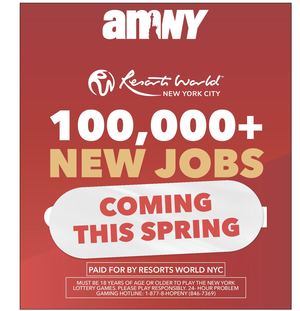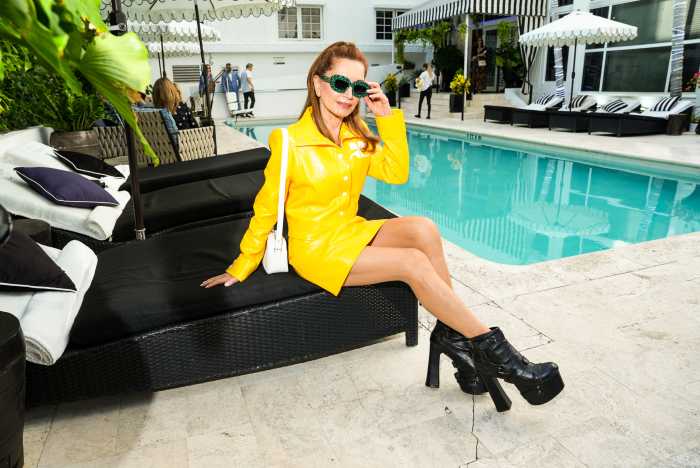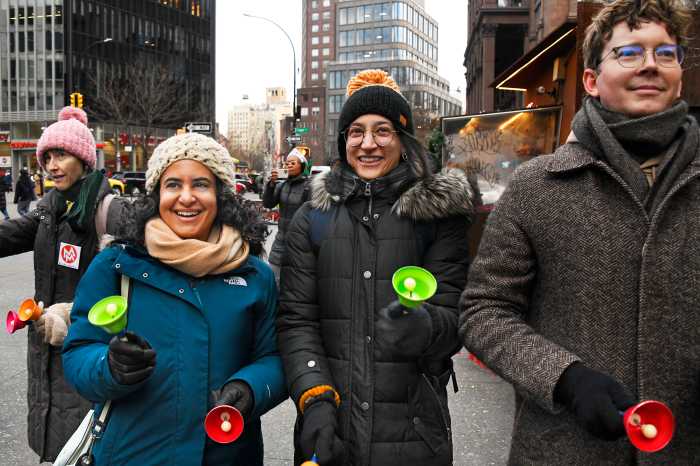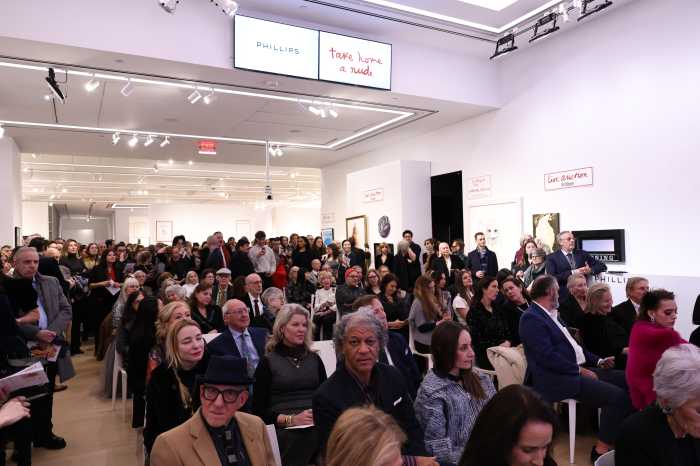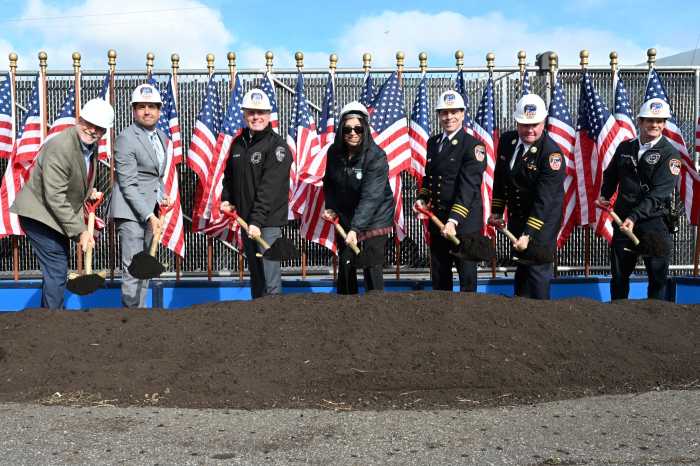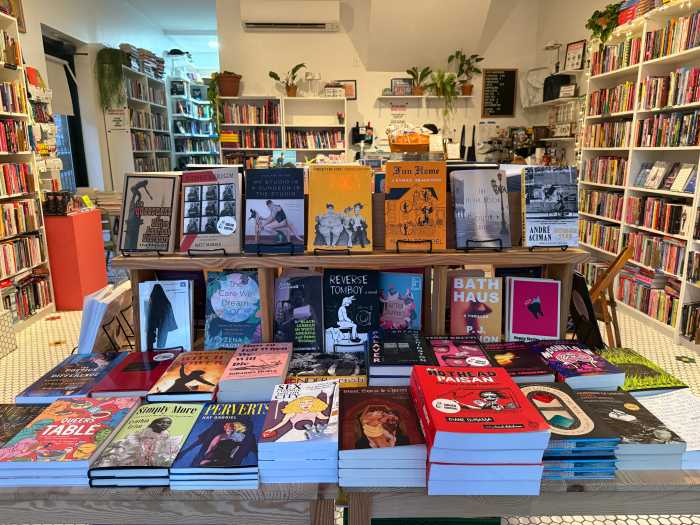BY SAM SPOKONY
Training ground breeds new generation of electronic musicians, producers
Rasmus Kjærbo had a problem. Like so many other aspiring producers with high-tech software and plenty of free time, he loved electronic music — but kept getting lost in the intricacies of what makes the technology work.
“It was mostly just me twisting knobs and pressing buttons,” Kjærbo, 25, said as he laughed. “I didn’t really know what was going on.”
With years of background in music (primarily as a DJ) and an undying passion to start creating his own tracks, he realized that the answer was quite simple: He didn’t need any new equipment — just a little direction. So Kjærbo (who is from Copenhagen, Denmark) hopped a plane to New York and signed up for classes in production and sound design at one of the world’s premier training centers for aspiring electronic artists.
The offices and classrooms of Dubspot (at 348 West 14th Street) are where some of the city’s (and the world’s) elite producers, DJs and audio technicians gather to impart wisdom — and their freshest skills — onto the next generation.
“Basically, what we’re trying to do is give [students] the tools to express themselves and find their own voice,” said Kelly Webb, Dubspot’s director of student affairs. “There is a certain method to what we teach, in that we teach the software, but our classes are focused on the actual creation of the music.”
That rigorous learning environment has allowed Kjærbo to hit his sonic stride. Since arriving in January, he’s completed Dubspot’s upper-level certificate program, and is wrapping up a final class over the next couple of months. And while conventional thought might dictate that straightforward classroom learning is a drain on artistic creativity, his experiences with the course instructors have left him seeing a new musical light.
“The structured environment and the intensity of the classes really changed the way I looked at everything,” Kjærbo said. “I realized that [it’s] not about the programs you have. You can learn the basic functions of the programs by reading the manual. But the manual doesn’t show you how to produce. Once I started learning and creating in this setting, I was able to start breaking all the rules.”
Kiva — a Dubspot instructor who’s been performing and producing for 25 years — teaches classes in the production software Ableton Live, mixing and mastering and music theory. Asked about his philosophy of education, Kiva said, “With electronics, it’s more about the big concepts of expressing yourself through music than it is about having the latest software, because the software’s always changing. Six months from now they’re going to tell you that you need the hot new stuff. But if I gave you Ableton Live and a laptop and put you on a desert island, what are you gonna do with that? To me, the computer is just another instrument.”
It makes sense, then, that Dubspot’s classroom environment isn’t just about lectures, taking notes and following along on the keyboard. In Kjærbo’s sound design class — taught by Shareef Islam, an established New York City producer who has worked with hip-hop icons like Q-Tip and Mos Def — ten students started the afternoon by presenting samples of their own work. A quick and fluid technical language dominated all of the critical discussions of each student’s track, as Islam led talks that focused on the sounds as well as on the creative and mechanical processes that can be implemented, improved or varied. Observing the class was like sitting in a rehearsal room, watching a jazz quartet work through some tunes — but instead of chord changes or solos, there were edits, pitch shifts and bass wobbles.
For Islam, that “master class” style isn’t just for the benefit of certain students — it helps him create a fruitful artistic atmosphere for everyone involved (himself included). He stressed that keeping everyone in touch with performance also makes it easier to manage the “double-edged sword” of teaching a sound design class — balancing technical aspects and musical creativity.
“It allows [students] to learn, but it also allows them to say ‘I’m part of it.’ It’s different than just listening and watching,” said Islam after class. “We’re all learning from each other, whether it’s instructors or students. And what’s important is that, even though I’m teaching some software, I come from a musical background, not an engineering background. So I’m not thinking in numbers, I’m thinking in colors and tonalities. I’m thinking about that even when I’m teaching.”
For Kjærbo — who wowed Islam and his classmates with his own presentation (an organically ambient ten-minute track called “Birth”), a vital part of his personal growth at Dubspot has been the fact that, in New York, he’s finally had the chance to get to know musicians like Islam — and hang with other students.
“One of the biggest changes that happened when I came here was the inspiration. I saw and met people who are actually doing this for a living. You always do it for fun, but I could tell that they took it more seriously — and that was mind blowing for me, because I don’t come from a musical family or environment. People I know in Denmark respect what I do, but they see it more as a hobby. Here, everyone’s doing it with a purpose.”
For Islam, that sense of purpose could go a long way towards the establishment of larger, accredited institutions for electronic music — although he acknowledges that it still needs to be embraced by more traditional musicians and educators across the world. When asked if he could envision the creation of a conservatory for production and sound design, he was optimistic.
“Yeah, I can see that happening, and I can see it going even further. The integration of music and sound has become a part of everything, a part of everyone’s life. I can hear it when I listen to film soundtracks that have been composed entirely with electronics, and it’s only going to grow. Sure, there are some traditional composers who will tell you it’s not real music — but we know that kind of thinking just doesn’t apply anymore.”
Kjærbo is thinking about the future too. As he masters his craft and finds some gigs around town, he’s beginning to work on nailing down some New York lingo.
“I know I can do it now,” he said, smiling wide. “If I put in the time, I’m going to go from…how do you say it here? Zero to hero?”
For more info, visit dubspot.com or call 212-242-2100.
